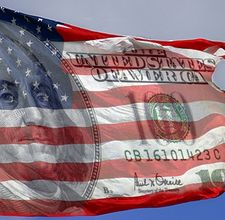GNMA bonds, otherwise known as a “Ginnie Mae,” is a bond from the Government National Mortgage Association, which is an agency of the U.S. Department of Housing and Urban Development. GNMAs are attractive because they’re backed by the U.S. government, making them safer than a corporate bond while still paying historically higher yields than U.S. Treasury obligations.
Instructions:
1 Set up a brokerage account. GNMA bonds can be purchased from a bank brokerage account, traditional brokerage house or online brokerage firm. Companies are not required to trade every investment type, so confirm that your brokerage purchases and sells GNMA bonds. While inquiring on availability, you may also want to discuss fees for GNMA trades because costs will vary between institutions.
2 Fund the account. GNMA bonds are available on both the direct and secondary markets. The direct market prices begin at $25,000, and traders may purchase at any price above this in $1 increments. GNMA bonds may be available for less than $25,000 on the secondary market.
3 Get the GNMA bonds. Reason the bind desk associated with your work steadfastly to put the GNMA interchange. Ask nearly indirect mart prices to check whether you’ll accomplish a plain industry buy or a tributary marketplace job. Determining factors may include the acquire terms and “gain to state,” which is the due period make on the connect from the acquire consort until the bond
GNMA bonds are great
With the sharp drop in mortgage rates over the past few weeks to the lowest levels since 1973, homeowners are flocking to refinance. The Washington-based Mortgage Bankers Assn. on Thursday reported that its index of refinancing activity has soared to 1,410.7, up from 400.0 in May. That means refinancings are running more than triple the pace of May.
Faced with that evidence, many GNMA owners on Wall Street bailed out over the past two days, selling their GNMA bonds and using the proceeds to lock in yields on Treasury bonds–which don’t have the premature-payment risk of GNMA bonds.
Instructions:
1 Set up a brokerage account. GNMA bonds can be purchased from a bank brokerage account, traditional brokerage house or online brokerage firm. Companies are not required to trade every investment type, so confirm that your brokerage purchases and sells GNMA bonds. While inquiring on availability, you may also want to discuss fees for GNMA trades because costs will vary between institutions.
2 Fund the account. GNMA bonds are available on both the direct and secondary markets. The direct market prices begin at $25,000, and traders may purchase at any price above this in $1 increments. GNMA bonds may be available for less than $25,000 on the secondary market.
3 Get the GNMA bonds. Reason the bind desk associated with your work steadfastly to put the GNMA interchange. Ask nearly indirect mart prices to check whether you’ll accomplish a plain industry buy or a tributary marketplace job. Determining factors may include the acquire terms and “gain to state,” which is the due period make on the connect from the acquire consort until the bond
GNMA bonds are great
With the sharp drop in mortgage rates over the past few weeks to the lowest levels since 1973, homeowners are flocking to refinance. The Washington-based Mortgage Bankers Assn. on Thursday reported that its index of refinancing activity has soared to 1,410.7, up from 400.0 in May. That means refinancings are running more than triple the pace of May.
Faced with that evidence, many GNMA owners on Wall Street bailed out over the past two days, selling their GNMA bonds and using the proceeds to lock in yields on Treasury bonds–which don’t have the premature-payment risk of GNMA bonds.

